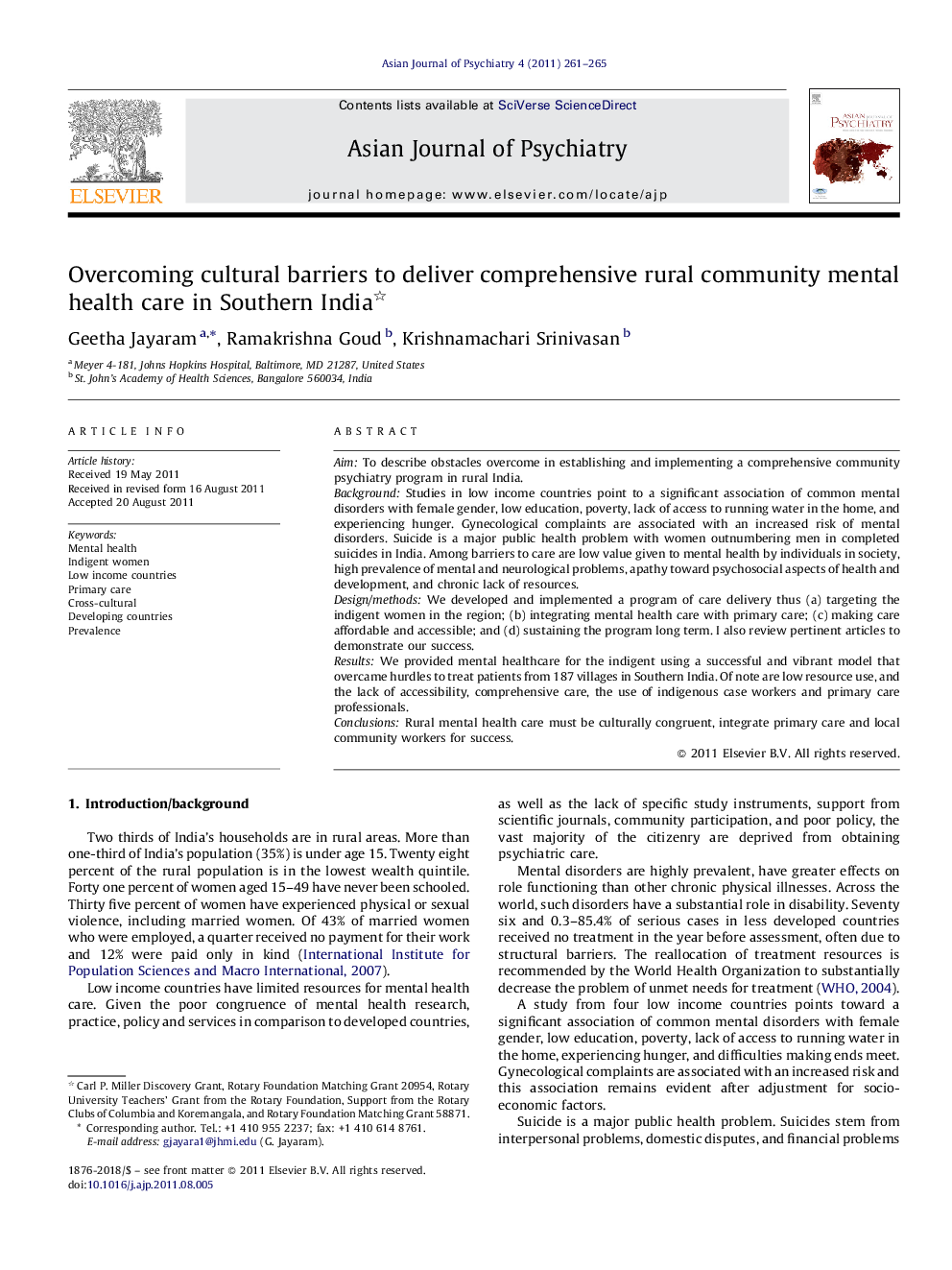| Article ID | Journal | Published Year | Pages | File Type |
|---|---|---|---|---|
| 315556 | Asian Journal of Psychiatry | 2011 | 5 Pages |
AimTo describe obstacles overcome in establishing and implementing a comprehensive community psychiatry program in rural India.BackgroundStudies in low income countries point to a significant association of common mental disorders with female gender, low education, poverty, lack of access to running water in the home, and experiencing hunger. Gynecological complaints are associated with an increased risk of mental disorders. Suicide is a major public health problem with women outnumbering men in completed suicides in India. Among barriers to care are low value given to mental health by individuals in society, high prevalence of mental and neurological problems, apathy toward psychosocial aspects of health and development, and chronic lack of resources.Design/methodsWe developed and implemented a program of care delivery thus (a) targeting the indigent women in the region; (b) integrating mental health care with primary care; (c) making care affordable and accessible; and (d) sustaining the program long term. I also review pertinent articles to demonstrate our success.ResultsWe provided mental healthcare for the indigent using a successful and vibrant model that overcame hurdles to treat patients from 187 villages in Southern India. Of note are low resource use, and the lack of accessibility, comprehensive care, the use of indigenous case workers and primary care professionals.ConclusionsRural mental health care must be culturally congruent, integrate primary care and local community workers for success.
